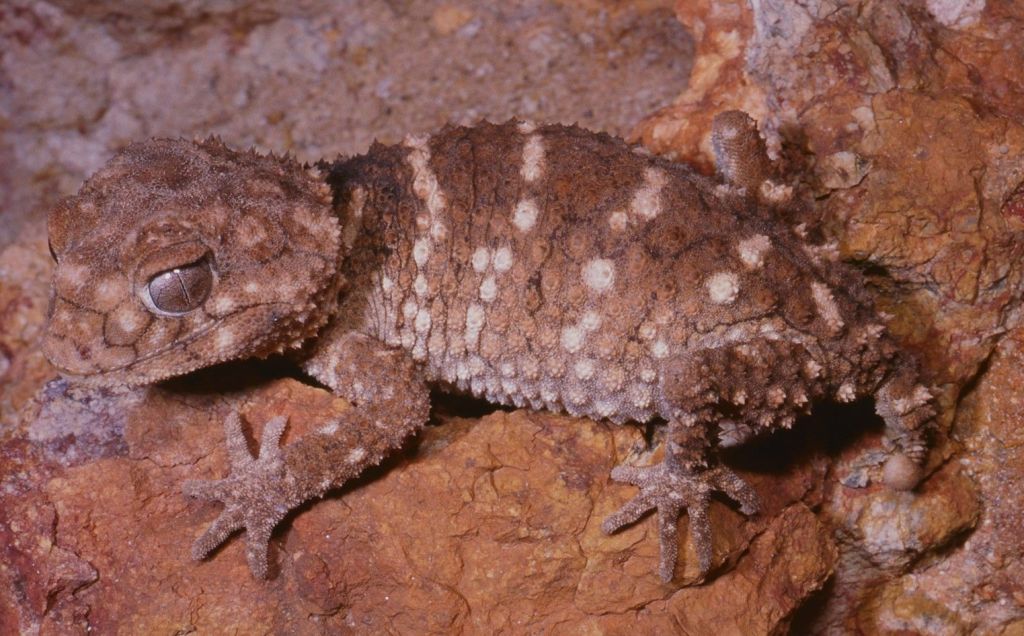By Paul Oliver
At first sight a Spiny Knob-tailed Gecko looks more like a Pokemon character than a lizard!
Not only do they have perhaps the smallest tail of any lizard, but they also have strange enlarged knob of unknown purpose at their tail tip. Furthermore, their tail is so attenuated that they are one of the few geckos that have also lost the ability to shed their tail.
To make things more ridiculous the tiny tail is juxtaposed against a relatively huge head.
Presumably to cope with this concentration of weight at the head they have relatively long and widely spaced forelegs, and often stand with their body slanting downwards towards the tail.
And to top things off, as their name suggests, they are also covered with numerous spiny scales. These help to provide excellent camouflage as they hide between rocks or logs on the ground, but also make them look like animated pincushions.
In Queensland until recently only one species of Spiny Knob-tailed Gecko has been recognised – the Rough Knob-tailed Gecko (Nephrurus asper). But based on recent work at Queensland Museum, we have now shown that there are actually two species in Queensland.

With support from Project DIG, a partnership between Queensland Museum Network, BHP and BMA we have been assessing genetic diversity in a number of lizards species from central Queensland, especially around the Brigalow Belt. One of the focal species was the Rough Knob-tailed Gecko.
Although we found low genetic diversity in a focal area of study in eastern Queensland – a few samples from populations from the mesas and breakaways of arid far western Queensland were much more divergent.
Investigation of specimens and photographs also demonstrated that these western Queensland animals show differences in colour pattern.

Based on this data we believe that the western Queensland geckos are a different species to those from the Brigalow Belt and surrounding areas of eastern Queensland.
This species from western Queensland has been named elsewhere, but in publication many scientists have decided not to recognise. Hence, we named this species Nephrurus eromanga – in reference to the Eromanga Basin upon which the low ranges in which they live.

We know very little about the ecology of the Eromanga Basin Knob-tailed Gecko. It does occur in protected areas such as Diamantina National Park, and also appears able to persist in grazed areas. Based on this we are reasonably confident that it is probably not threatened at this time.
It is certainly a very distinctive contribution to the rich diversity of Queensland lizards.
It also nicely illustrates how synergistic the work to understand biodiversity can be – in this case a project focused in one area (the Brigalow Belt) has set the stage for understanding biodiversity in other areas (western Queensland).

This research was supported by Project DIG, a partnership between Queensland Museum Network, BHP and BMA. Read the full research article here.

You must be logged in to post a comment.